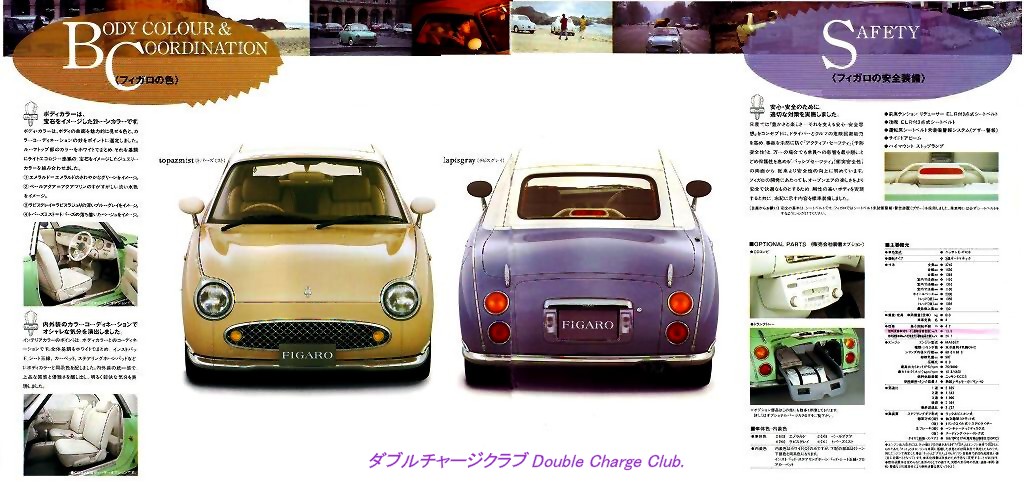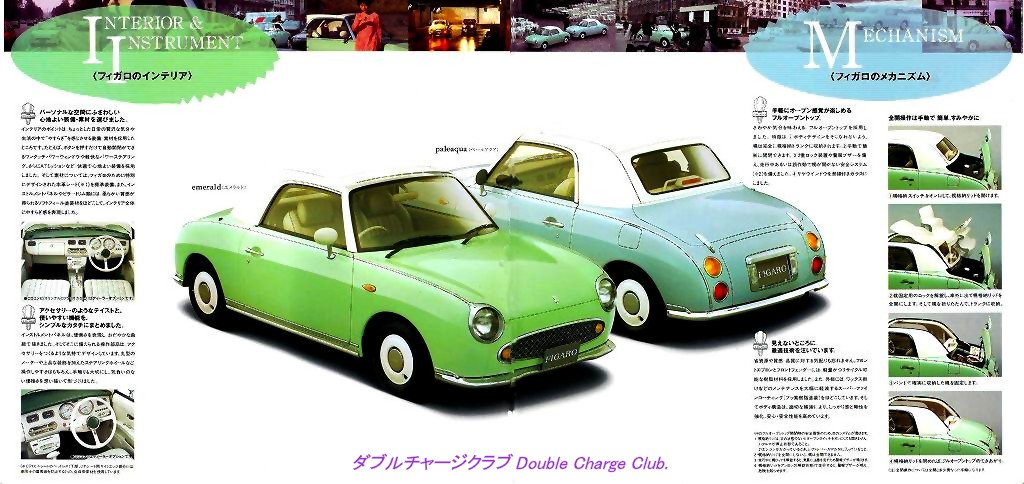Nissan Figaro: The Retro Open Top Classic Japanese Car
There’s a reason that retro cars are catch the eye of many car collectors – not only do they get more rare as time goes on, but they represent a bygone era while having underpinnings from a more modern age. This could explain why the Nissan Figaro, a retro car first introduced in Japan in 1989, was so popular during its limited production – and why it remains a collector’s item today.
The Nissan Figaro was originally only sold in Japan, but it eventually became very popular in the UK and Ireland after it was released officially in 1991. It was designed by Shoji Takahashi, who won a design competition for it, and has some resemblance to the 1960s Datsun Fairlady models. Unlike contemporary Mitsuokas, with their bolt-on retro-look parts, the Figaro represents a complete vision of what a modern car styled on 1960s principles would look like.
Only a limited number were produced, with the original 8,000 being supplemented by 12,000 more in order to meet demand. The car came in only four colors, which together represented the four seasons of the year: Topaz Mist, Emerald Green, Pale Aqua and Lapis Grey. Topaz Mist was the rarest, with only 2,000 models produced in this color.
Part of the inspiration for the car came from the theme of the 1989 Tokyo Motor Show, which was “Back to the Future”. Its name, “Figaro”, referred to the main character in Pierre Beaumarchais’ famous play, The Marriage of Figaro, based on the Mozart opera of the same name. A Nissan special projects group called Pike Factory, which specialized in producing niche automobiles such as the Be-1, Pao and S-Cargo, also worked on the Nissan Figaro.
Some features of the Figaro were leather seats, air conditioning, a CD player (which also had a retro radio look) and an open roof; furthermore, special limited edition cars included passenger side baskets and cup holders. The car was so rare that people who wanted to buy it had to enter a lottery, which increased its value even more and led to the modern-day perception of the Figaro as a rare car. Some parts can be hard to acquire, but many are available as they are also used in more common Nissan models of the time.
The fuel economy is an impressive 39 miles per gallon, but the a top speed of 106 miles per hour is somewhat lacking. Not surprising given the 60-horsepower engine. The Figaro’s genuine leather seats are a big draw for fans of this car. Not only do they look classy, but they add to a cabin environment that blends a distinctive complementary style. Adding to this is the low-mount headrest and synthetic leather piping that is used to prevent leather fatigue.
One of the Figaro’s most unique trademarks is its retractable top, which has an external design that is completely hidden in the trunk. The top is equipped with a double lock and warning buzzer as safety features, as well as a secondary hood latch that is designed to prevent the hood from opening while the car is being driven, or if it its activation switch is turned on by accident.
Features of the body include a flush mount apron and flush mount fender, as well as glassfibre resin material used with an outer gel coat for the car’s front fenders and front grill. The materials that are used result in body components that are durable and low-maintenance, which is especially helpful as it is difficult to find places to service and maintain the car. Fluoroplastic paint, which comes in the car’s signature four colors, is used on this vehicle.
Today, the best place to find Figaros for sale is the Japanese car auctions. With 7 to 8 million vehicles passing through each year, even rare vehicles like this one can be sourced with relative ease. Contact us to find out more.




